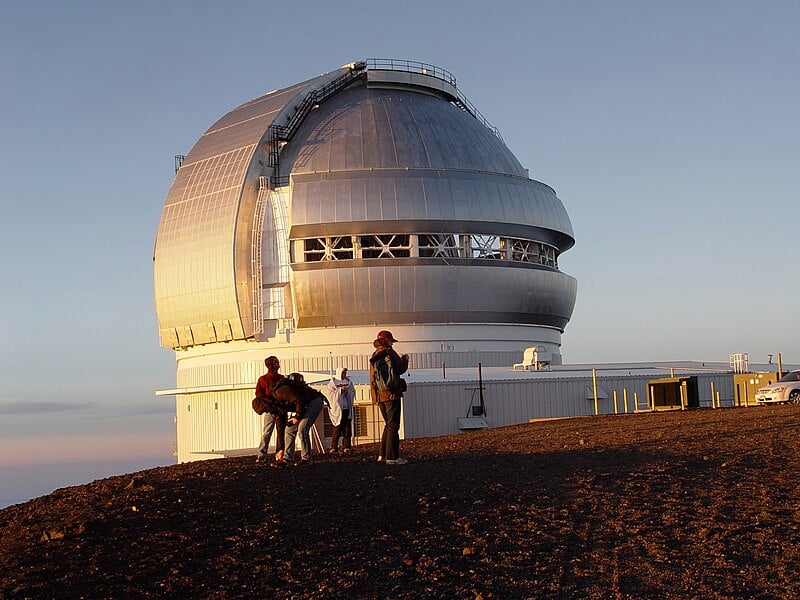The closest single star to our own Solar System is Barnard's Star. It's 6 light years away and astronomers have just found four new mini-Earth planets in orbit around this red dwarf star. The discovery was made with the MAROON-X instrument on the Gemini North telescope which makes use of the radial velocity method to detect exoplanets. One planet was found in August 2024, the other three were only just added.
Barnard's Star is a small, dim red dwarf star located in the constellation Ophiuchus. It's distance was first measured by the astronomer E.E. Barnard in 1916 and has the highest proper motion of any known star, moving swiftly across our sky at a rate of 10.3 arc-seconds per year. This rapid movement is due to both its proximity to Earth and its high velocity relative to our Solar System. It's only 16% the mass of the Sun and about 0.0035 times its luminosity and despite its close proximity, it is invisible to the naked eye.
This close red dwarf has been the subject of an exoplanet study in a project led by University of Chicago's Jacob Bean. The team used a custom-built instrument called MAROON-X, which was designed to identify planets orbiting red dwarf stars. It's attached to the Gemini North telescope which is one of two telescopes that make up the International Gemini Observatory near the summit of Mauna Kea in Hawaii at an altitude of around 4,200 metres. It's operated by the National Science Foundation's NOIRLab and has a primary mirror 8.1 metres across.
 Gemini North Observatory (Credit : Mailseth)
Gemini North Observatory (Credit : Mailseth)
MAROON-X detects exoplanets by measuring tiny shifts in the wavelength in starlight caused by the gravitational pull of orbiting planets—a method known as the radial velocity technique. The instrument allows scientists to determine both the number and masses of exoplanets based on these subtle variations in light. It takes a significant amount of calibration and the analysis of data collected over 112 nights across three years. The team confirmed three exoplanets orbiting Barnard's Star, upgrading two from candidate status. They were also able to combine MAROON-X data with findings from the ESPRESSO instrument at the European Southern Observatory's Very Large Telescope in Chile. This enabled them to verify a fourth planet, elevating it too from candidate to confirmed exoplanetary status.
 The setting Sun dips below the horizon of the Pacific Ocean, bathing the Paranal platform in light in this amazing aerial image from the Atacama Desert in northern Chile, home of the Very Large Telescope (Credit : ESO/G. Hüdepohl)
The setting Sun dips below the horizon of the Pacific Ocean, bathing the Paranal platform in light in this amazing aerial image from the Atacama Desert in northern Chile, home of the Very Large Telescope (Credit : ESO/G. Hüdepohl)
The new planets around Barnard's Star are more likely to be rocky rather than gas giants like Jupiter. It's slightly more challenging however to confirm the composition of the planets because their orbital planes don't allow for transit observations from Earth. A transit of the planet across the disk of the star allows starlight to shine through any gas components of the planet. In this way, exoplanetary atmospheres can be explored. Instead the team had to rely upon data from similar exoplanets to estimate their makeup. They have been able to rule out the existence of Earth-mass planets within Barnard's Star's habitable zone—the orbital region where conditions could potentially support liquid water on a planet's surface.
The four planets are on close orbits to Barnard's star, completing orbits in just a few days and they each only posses between 20% - 30% of the Earth's mass. The fourth planet is the lightest exoplanet ever detected using the radial velocity technique and so the team hope it will herald in more discoveries of sub-Earth sized exoplanets across the Galaxy.
 Universe Today
Universe Today
